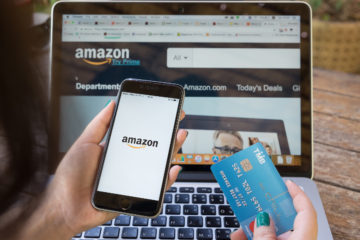Delve into the intriguing world of tech acquisitions and antitrust scrutiny with John Tamny, Senior Fellow at the Market Institute. Tamny examines the EU’s attempt to thwart Amazon’s purchase of iRobot, drawing parallels to the current FTC under Lina Khan’s leadership. Speculating on what could have been if Khan had steered the FTC during the ’90s, Tamny reflects on Amazon’s humble beginnings, its skepticism-ridden journey to success, and the challenges of predicting the future landscape of tech giants like Amazon amidst evolving regulatory landscapes.
He writes:
“A headline earlier in the week indicated that the searching-for-a-purpose EU governing body would attempt to block Amazon’s purchase of iRobot. It would seem the EU is trying to out-Lina Khan the FTC’s Lina Khan. As most readers know, the head of the FTC despises “big” and has made it her raison d’etre to restrain the technology giants of the moment from getting any bigger via acquisition.
What’s happening in the here and now brings to mind a counterfactual. In particular, what if Khan had been FTC Chair under Bill Clinton? Other than age, the notion isn’t totally outlandish. Clinton was a Democrat as Joe Biden is, and the Clinton administration had an at-times troubled relationship with big too as evidenced by the Clinton DOJ’s wholly needless mugging of Microsoft.
Looking back to the 1990s, Walmart was very big then. What if the Bentonville, AR giant had chosen to purchase Amazon. Would Khan have attempted to block the purchase, or for that matter the EU? Figure that the latter opened its doors in 1993.
The speculation here is that neither Khan nor the EU would have even noticed if Walmart had swallowed the minnow from Seattle. Think about it. In the mid-1990s it wasn’t just that Amazon was years away from profits, it was also that more than a few members of the smart money set feared that Amazon would never achieve profitability.
What about Jeff Bezos himself? It’s well known that Bezos confided to those closest to him, including his parents, that Amazon had high odds of failure.
Considering internet shopping in a bigger picture, market share sense, it’s easily forgotten that by the late 1990s something north of 90% of online commercial transactions were still completed via regular mail. Jimmy Soni reported the latter in his excellent history of PayPal, titled The Founders. The simple truth is that from the mid-to-late 1990s, the view remained that online commerce was the most niche of niche concepts. If it had been viewed differently, it’s no reach to suggest that Amazon’s shareholders would have gladly accepted – and perhaps demanded – a purchase of the company that few thought had a chance at long-term success.
At which point it’s useful to move beyond market share and a lack of profitability, and toward cosmetics. To do this, let’s pivot to Pandora’s Box, Peter Biskind’s endlessly interesting new book about the rise of high-end television. In it he describes Amazon’s headquarters that seemingly replaced the garage where it all began. In Biskind’s words, Amazon “had an office filled with desks made of old doors sitting on sawhorses in a second-floor walk-up located in a seedy Seattle neighborhood squeezed between pawn and porn shops.”
Ok, so imagine Khan or the EU attempting to block a purchase of Amazon by a Walmart, Target, or for that matter Sears? It was still a player in the ’90s. Seriously, would anyone have cared? Getting more specific, imagine the optics if an attempted purchase of Amazon had been blocked. One guesses more than a few news accounts would have included photos of Amazon’s headquarters in order to showcase the gasping-for-air (and capital) business that the FTC and/or EU were trying to restrain from being bought. Which is the point, or should be.”


